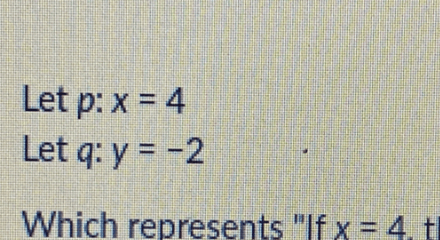Let P: X = 4 Let Q: Y = −2 Which Represents if X = 4, Then Y = −2”?

In the realm of conditional statements, the assertion ‘Let P: X = 4, Let Q: Y = -2’ encapsulates a fundamental logical relationship, where the value of Y is contingent upon X being equal to 4. This prompts us to consider the implications of such dependencies in both theoretical and practical contexts. What does it mean for our understanding of mathematical relationships when a specific value dictates another? Exploring this connection not only enhances our grasp of conditional reasoning but also raises intriguing questions about the broader applications of such propositions in various fields.
Understanding Conditional Statements
Conditional statements, which establish a relationship between two propositions through logical implications, are fundamental in both mathematical reasoning and programming.
They embody conditional logic, where the truth values of propositions dictate outcomes.
Understanding these statements allows one to navigate complex logical frameworks, ensuring clarity in reasoning.
This knowledge empowers individuals to make informed decisions, fostering an environment where freedom of thought can flourish.
See also: Labeled:V-Xzjijklp4= World Map
The Relationship Between X and Y
Examining the values of X and Y, specifically X = 4 and Y = -2, reveals a distinct relationship characterized by their numerical difference and implications for further analysis.
This relationship invites exploration of causal inference and variable correlation, suggesting that changes in X may influence Y.
Understanding this dynamic fosters a deeper insight into the underlying principles governing these variables, enhancing analytical capabilities.
Applications of Logical Relationships
Building on the understanding of the relationship between X and Y, the applications of logical relationships extend into various fields, illustrating how these connections can inform decision-making and predictive modeling.
Logical implications derived from such relationships can be observed in real-world examples, including economic forecasting, algorithmic trading, and risk assessment. This enables stakeholders to navigate complexities and optimize outcomes effectively.
Conclusion
In the grand theatre of mathematics, the proposition ‘If X = 4, then Y = -2’ serves as a poignant reminder of life’s inherent absurdities.
Just as X obediently dictates the fate of Y, so too do individuals often find themselves bound by arbitrary constraints.
The absurdity lies not in the relationship itself, but in the blind acceptance of such conditional dependencies.
It beckons a reconsideration of the assumptions that govern both equations and existence, urging a rebellion against predetermined outcomes.




